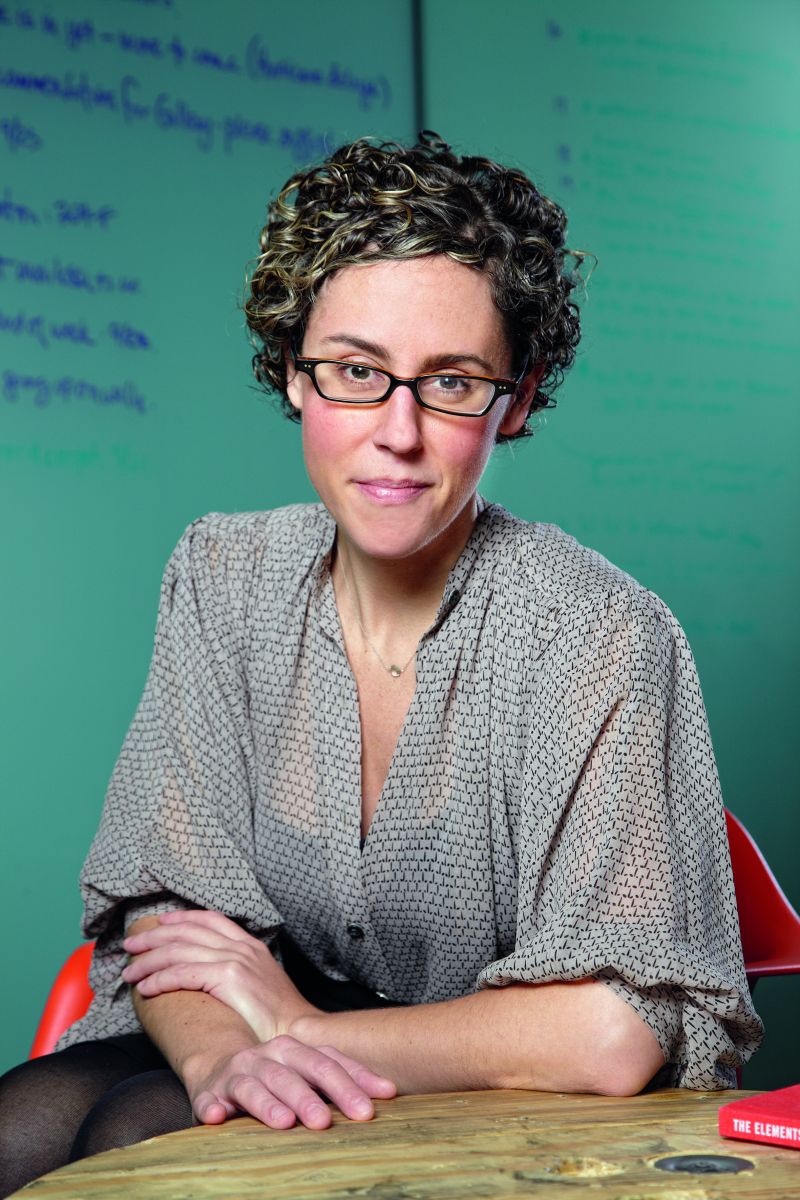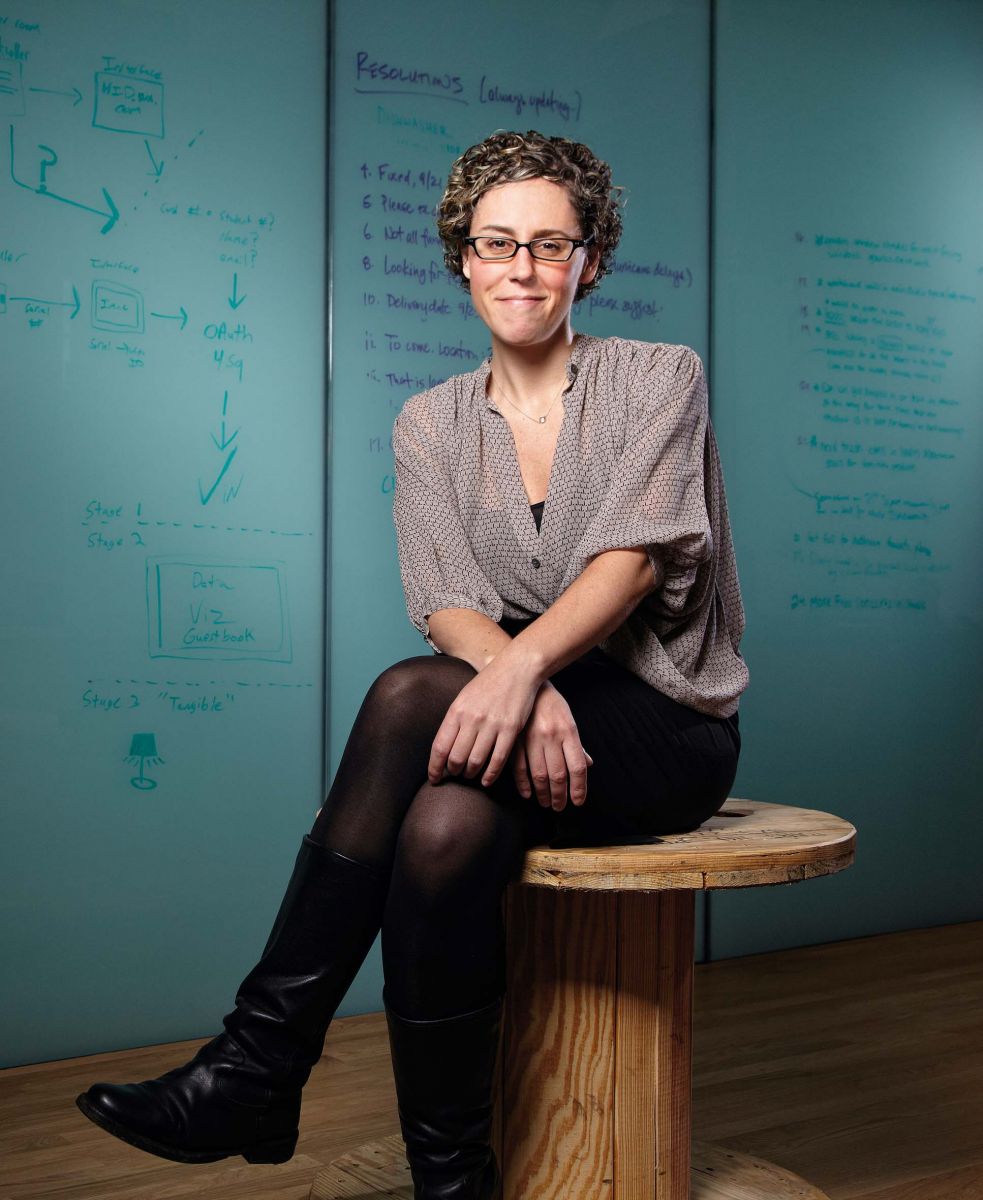Liz Danzico on web design education
Part-educator, part-designer, part-UX consultant, Liz Danzico is one of the best-connected people in the industry. She chats to Tom May and gives her unique take on the state of web design education and user experience today
This article first appeared in issue 222 of .net magazine - the world's best-selling magazine for web designers and developers
This article first appeared in issue 222 of .net magazine - the world's best-selling magazine for web designers and developers
At .net magazine, we get a lot of emails from web design students expressing dissatisfaction with their courses. That may be the nature of the beast – people don’t often contact the press to tell them how content they are – but the number of complaints is striking. And when we mention this to Liz Danzico, chair and co-founder of the MFA in Interaction Design program at New York’s School of Visual Arts, there’s no surprise in her reaction: she’s heard a lot of similar comments herself.
“A lot of universities are at a loss because the process of changing curricula is just so arduous,” she says. This makes it difficult to keep courses up to date in a fast-changing environment. “It’s a long process, so that by the time you put in a request, that sort of technology is now out of date. You’re already three operating systems ahead and HTML’s on whatever number by that point.”

Danzico’s course, though, takes a different approach. Although many of those who enrol are interested in pursuing web design, the syllabus is less about coding and specific web technologies and more about a wider design philosophy.
“Interaction Design is about observing and designing for the relationship between people over time”, she explains. “That could be how it feels to swipe between screens on an iPad or iPhone, or something as simple as the way a door communicates to you that it’s push or pull.” Rather than just building homepages, her students get to do things such as experiment with prototyping products, using everything from woodworking to 3D printers.
Creative coding
Even when they do tackle coding, it’s not what you’d expect. “The coding class doesn’t actually touch a screen or any kind of device for three or four weeks,” Danzico explains. “So they learn about variables and loops and the logic of code programming in paper format. Among humans. That way, they learn about decision making. And so when they go to actually design for a mobile device or a website, that foundational knowledge they have about how things work gives them a much richer sense in terms of larger systems.”
Daily design news, reviews, how-tos and more, as picked by the editors.
A lot of universities are at a loss because the process of changing curricula is just so arduous. By the time you put in a request, that sort of technology is out of date
It’s a radical approach that offers wide horizons and rewards an open mind. “It’s not a vocational course,” stresses Danzico. “My students are more interested in the way that interaction design can influence their thinking such that they can apply that to other areas. That may be someone who ultimately wants to go into web design, or someone who’s already a web designer who wants to move into other areas.”
It’s not a unique concept, but it is a rarity. “There are a couple of universities in the States that teach interaction design and a handful in Europe, in Scandinavia,” Danzico explains. “Even for a small narrow field they’re all quite different.” One thing that marks out her course is that all the faculty members work in the industry. “For instance, Zach Klein who is a serial entrepreneur – he was one of the co-founders of Vimeo and then went on to Boxee – is teaching them entrepreneurial design. So it’s not only the methods that they learn but they see the practices of the people they are learning from in real-time.”
What’s truly fascinating to Danzico is the cross-pollination of disciplines that takes place. “You have to consider how this person, who’s studied neuroscience and fine arts, but who now wants to be an interaction designer, is going to work with the industrial designer, who’s always been a practitioner. It’s the mingling of completely different cultures. They all have the same kind of ideas but such different reference points.”
Education for life

Of course, education isn’t just for undergrads but for everyone, and Danzico shares her teaching skills with the wider web community by speaking at numerous events. She visited our shores in 2010 at Belfast’s Build conference, where she spoke on ‘The power of the pause’ (“The idea being to look for innovation in the blank spaces, or the borders people don’t typically pay attention to”). She also spoke at UX London on ‘Designing for inspiration’ (“When people
are allowed to improvise, it leads to more satisfying user experiences, so we need to ensure we’re designing opportunities to do that”). Always in demand as a speaker, her talks are as inspiring as they are original and thought-provoking; the same goes for her blog, bobulate.com.
“I have almost a sort of obsession that drives the content of the talks for a given time,” Danzico reveals. “My interest right now is in how colour and language affect our perception.” She puts the eclecticism of the subject matter down to the wide range of people she comes into contact with and “reading, reading about everything, really thinking about everything that you do as contributing to the thing you believe in.”
The drive to learn
She’s overjoyed to be working in an industry where there’s an enthusiasm for learning. “I think it’s something to do with the fact that we don’t get certified in the same way that architects or lawyers do,” she suggests. “There are degrees and courses of course, but there’s no one saying: now you are officially certified and a web design professional or a user experience professional. Whereas for people in other professions, who have certification, then it doesn’t spawn that same kind of need to advance.
We don’t get certified in the same way that architects do. There's no way to say: now you're certified and a web design professional
“I think there’s also an innate curiosity among the people that do this kind of work. There has
to be, right? So it’s always like: how can we learn the new thing?” That’s true of the teacher as much as the student; Danzico is currently applying to do a PHD herself. “It’s tied to my interest in behaviour and perception,” she explains. “There’s a lot of cognitive science and perception theory I’m interested in, so rather than just read about it, I’m taking that a step further and seeing how I can legitimise myself in that area.”
Conversations with clients
As mentioned earlier, all of Danzico’s faculty hold down jobs in the “real world”, and she’s no exception. Alongside numerous writing and advisory roles, she works as an independent user experience consultant – sometimes in partnership with New York studios Happy Cog and Roger Black, but usually in a direct relationship with clients. She describes the job as “working with businesses to explore the relationship audiences have with their products and services,” with recent clients including public radio show This American Life and educational network Teach for All.

To her, creating a great user experience starts with a conversation. “In a very classic sense, a user experience designer could be thought of as just producing wireframes and some sort of flow documents – that’s like the material of our profession,” she says. “But to get to that point there is a whole lot of understanding and discovery conversations that have to happen. And more and more now, understanding the contents and the message, matching that with their overall objectives and goals, is a large part of what I do.
“I think we always used to do that,” she continues. “But now, at least in the work I do, I’m seeing that as a standard practice, whereby user experience after the understanding conversation really begins with an audit of content, some sort of guidelines as to how that content should play out, a content style guide, and moving on to other aspects that could include everything from user research to structural design.”
In this line of work, no two days are ever the same and there’s a lot of improvisation. “When you really get honest about it, it’s a lot of playing it by ear each time,” she admits. “I’ve actually never done a project the same way twice. And I like that. It’s been helpful to be somewhat fluid and flexible in the process. Especially today when the output of our work is so varied.”

The Creative Bloq team is made up of a group of art and design enthusiasts, and has changed and evolved since Creative Bloq began back in 2012. The current website team consists of eight full-time members of staff: Editor Georgia Coggan, Deputy Editor Rosie Hilder, Ecommerce Editor Beren Neale, Senior News Editor Daniel Piper, Editor, Digital Art and 3D Ian Dean, Tech Reviews Editor Erlingur Einarsson, Ecommerce Writer Beth Nicholls and Staff Writer Natalie Fear, as well as a roster of freelancers from around the world. The ImagineFX magazine team also pitch in, ensuring that content from leading digital art publication ImagineFX is represented on Creative Bloq.
